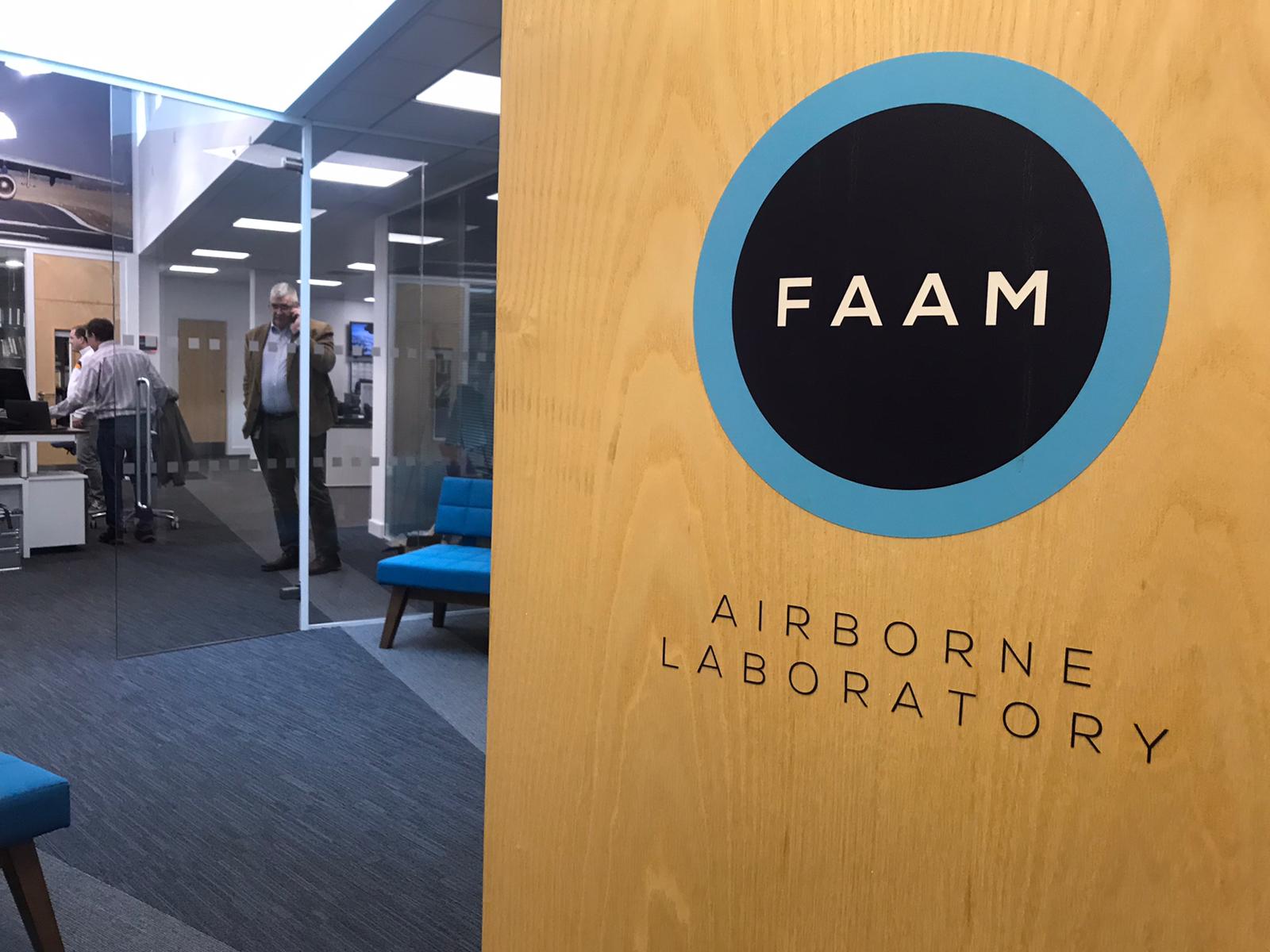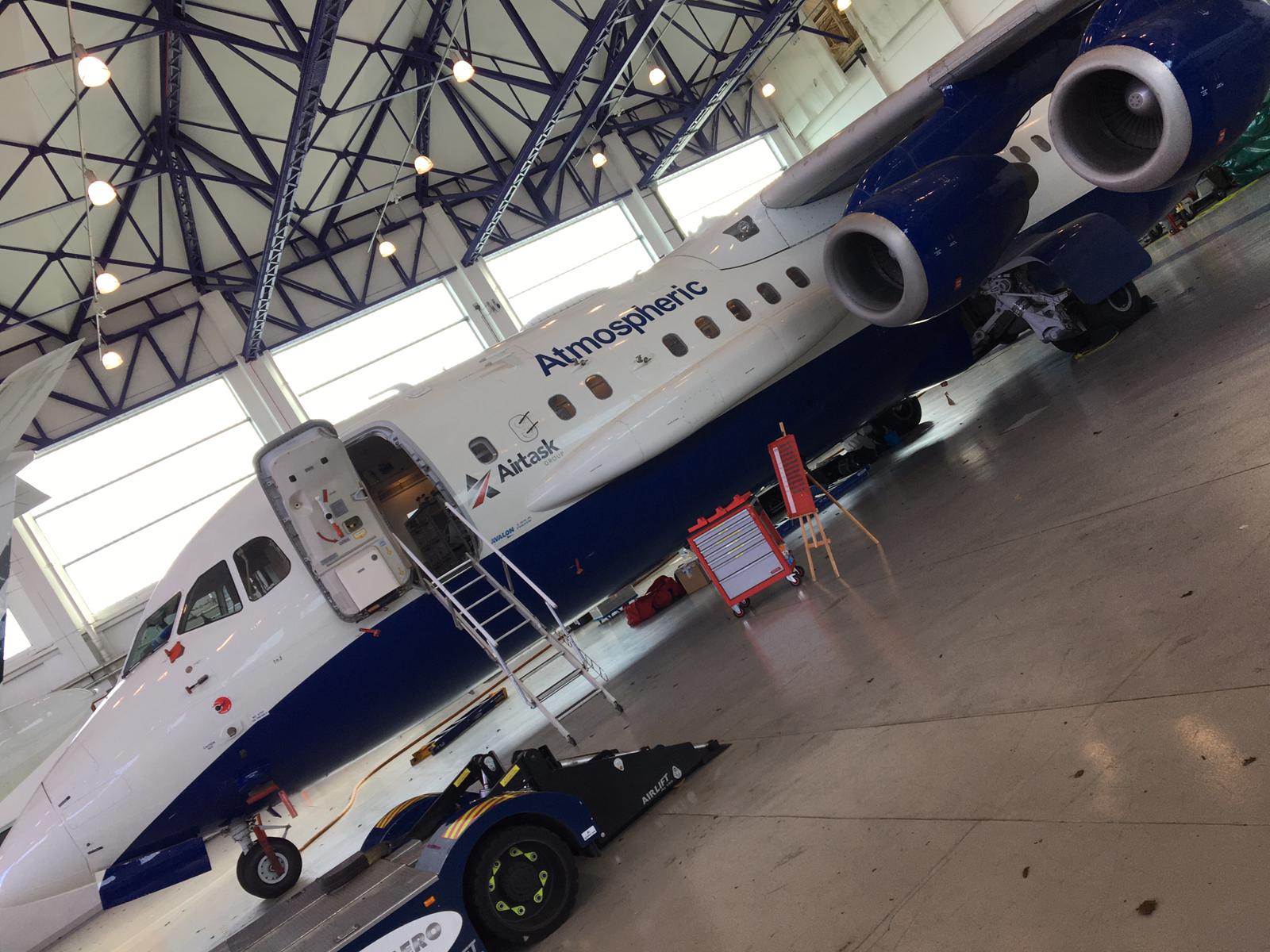Environment MSc students visit the FAAM Plane
30/03/2020

In January, along with some of the students from the Environmental Engineering MSc, we went to Cranfield Airport Hanger 1 to see the FAAM (Facility for Airborne Atmospheric Measurements) plane!
The aircraft is joint owned and run by NERC (Natural Environment Research Council) and the Met Office. FAAM is an independent company based at Cranfield University. Cranfield is the perfect place for this research facility. It is one of the only Universities which has its own airport and is a leader in research fields such as environment and aerospace.

We met with Alan Woolley, Head of FAAM, who explained all about the benefits of the FAAM plane and the important research that it records. We had the opportunity to board the plane which was amazing! The plane was the same size as a passenger plane but instead of rows upon rows of seats, there was testing equipment and computers along both sides of the plane. Surprisingly though, it still had the iconic plane smell: the source of which I still can’t put my finger on!
Alan told us all about the different flights that the plane goes on and the different places he has been able to visit as well as the sort of work he does on location. The main function of the FAAM plane is to look at clouds, specifically at raindrops. The aircraft measures temperature, humidity, and air pressure, collecting samples during flight to measure and make comparisons with other reported data from other sources. During the tour, the students were given the chance to ask Alan questions about the data that is collected and how Alan got into his field of work.

It was really inspiring to see how the content of the modules the students are learning in their lectures can be applied in the industry. It was fascinating to learn and see the amazing impact that this research facility is having on being able to research more about the atmosphere the how the information goes on to help inform the Met Office and improves weather forecasts.
Categories & Tags:
Leave a comment on this post:
You might also like…
Preparing your work for Turnitin submission
Before submitting your work into Turnitin for similarity checking, if you have used referencing software then you may need to take some important steps first. Mendeley and Zotero integrate with MS Word by embedding field ...
The fast track to supercar engineering: My Cranfield journey
It’s been a dream come true to work on some of the world’s most prestigious supercars – the Aston Martin Valhalla, McLaren 750 & Artura, the GMA T.33. But every successful ...
Automotive Engineering: From student to hypercar innovation at Rimac
We sat down with recent graduate Thomas Perrin, to discuss how his year on the MSc in Automotive Engineering at Cranfield University propelled him from the lecture hall directly into the ...
What this year at Cranfield really meant to me
Every Cranfield journey is unique. In this alumni reflection, Zachea Scicluna shares what her year at Cranfield truly meant, from facing uncertainty to gaining hands-on experience in industry-backed projects. I’ve been reflecting (and delaying) ...
Preparing for assignments and exams?
Sorry! We know it seems a bit mean to mention the exams in January rather than looking forward to the break before it! However, we know many of you will be thinking about your forthcoming ...
Screening for FTSE 100 companies on Bloomberg
So you’re researching an index and need some data on its constituent companies? Bloomberg’s Equity Screening tool makes light work of this, not just for the FTSE, but for indices, exchanges and sectors worldwide. Type EQS ...






